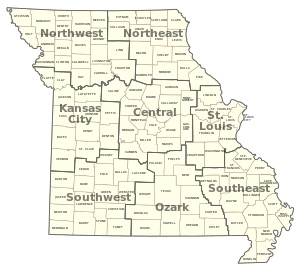Season structure remains unchanged,
and bag limits are nearly the same as last year.
JEFFERSON CITY—Waterfowl seasons and limits set by the Missouri Conservation Commission at its August meeting are similar to last year, except for an increase in bag limits on scaup.
At its meeting in Jefferson City Aug. 24, the Conservation Commission approved the following seasons and bag limits.
Ducks
North Zone:
Youth season - Oct. 20 and 21
Regular season - Oct. 27 through Dec. 25
Middle Zone:
Youth season - Oct. 27 and 28
Regular season - Nov. 3 through Jan. 1
South Zone:
Youth season - Nov. 17 and 18
Regular season - Nov. 22 through Jan. 20
Shooting Hours: One-half hour before sunrise to sunset.
Bag Limit: Six ducks daily with species restrictions of:
o 4 mallards (no more than 2 females)
o 3 wood ducks
o 4 scaup
o 2 redheads
o 2 hooded mergansers
o 2 pintail
o 1 canvasback
o 1 black duck
o 1 mottled duck
Possession Limit: Twice the daily bag (in total 12; varies by species).
Coots
Coot season runs concurrently with duck seasons in the respective zones with a daily bag limit of 15 and a possession limit of 30.
Geese
Blue, snow, and Ross’s geese - Oct. 27 - Jan. 31 statewide
White-fronted geese - Nov. 22 - Jan. 31 statewide
Canada geese and brant - Oct. 6 – Oct. 14 statewide and
Nov. 22 - Jan. 31 statewide
Shooting Hours - One-half hour before sunrise to sunset.
Bag/Possession Limit - The bag and possession limits include no more than three Canada geese daily (six in possession), 20 blue, snow, and Ross’s geese (all species combined) daily (no possession limit) with, two white-fronted geese daily (four in possession), and one brant daily (two in possession).
FALCONRY SEASON FOR DUCKS, COOTS, AND MERGANSERS:
Falconry is open during the teal (16 days) and regular gun duck season (60 days), including the youth season (2 days) in the respective zones, leaving 29 days remaining for extended falconry. The extended falconry days are Feb. 10 through March 10 statewide. The daily bag and possession limits shall not exceed three and six birds, respectively, singly, or in the aggregate during the regular duck hunting seasons (including teal and youth seasons) and extended falconry seasons.
LIGHT GOOSE CONSERVATION ORDER:
Persons must possess a Conservation Order permit to chase, pursue, and take blue, snow, and Ross’s geese between the hours of one-half hour before sunrise to one-half hour after sunset from February 1 through April 30, 2012. Any other regulation notwithstanding, conservation order participants may use electronic calls and shotguns capable of holding more than three shells. A daily bag limit will not be in effect during the Conservation Order.
ZONES: Zone boundaries remain the same as last year.
NONTOXIC SHOT:
Shells possessed or used while hunting waterfowl and coots statewide, and for other species as designated by posting on public areas, must be loaded with material approved as nontoxic by the United States Fish and Wildlife Service.
Youth waterfowl seasons will take place the weekend before the regular season in each zone. This is different than the past two years, when the youth hunt in the Middle Zone was held two weeks before the regular season opener to avoid an overlap with youth deer season.
Full details of waterfowl hunting regulations are available in the 2012-2013 Waterfowl Hunting Digest, available wherever hunting permits are sold or online at mdc.mo.gov/node/5646.
Before making waterfowl season recommendations to the Conservation Commission the Missouri Department of Conservation (MDC) surveyed hunters regarding the possible introduction of a fourth zone or a split hunting season. Resource Scientist Doreen Mengel says hunter responses to the survey were so divided that choosing any combination of split seasons or zones would have displeased a majority of hunters. Based on that information, MDC staff recommended no changes to the zone or season structures through 2015.
Mengel says Missouri’s ongoing drought could dramatically reduce waterfowl habitat and hunting prospects in Missouri this year.
“Although duck-hunting prospects are potentially bright again this year, with a liberal season and historically high duck numbers, hunter expectations must be tempered due to conditions created by the current severe drought conditions,” says Mengel. “Duck-hunting prospects will depend on the weather more this year than most. Fall rains will be needed to fill wetland basins and provide habitat for an anticipated record fall flight.”
-Jim Low-



















